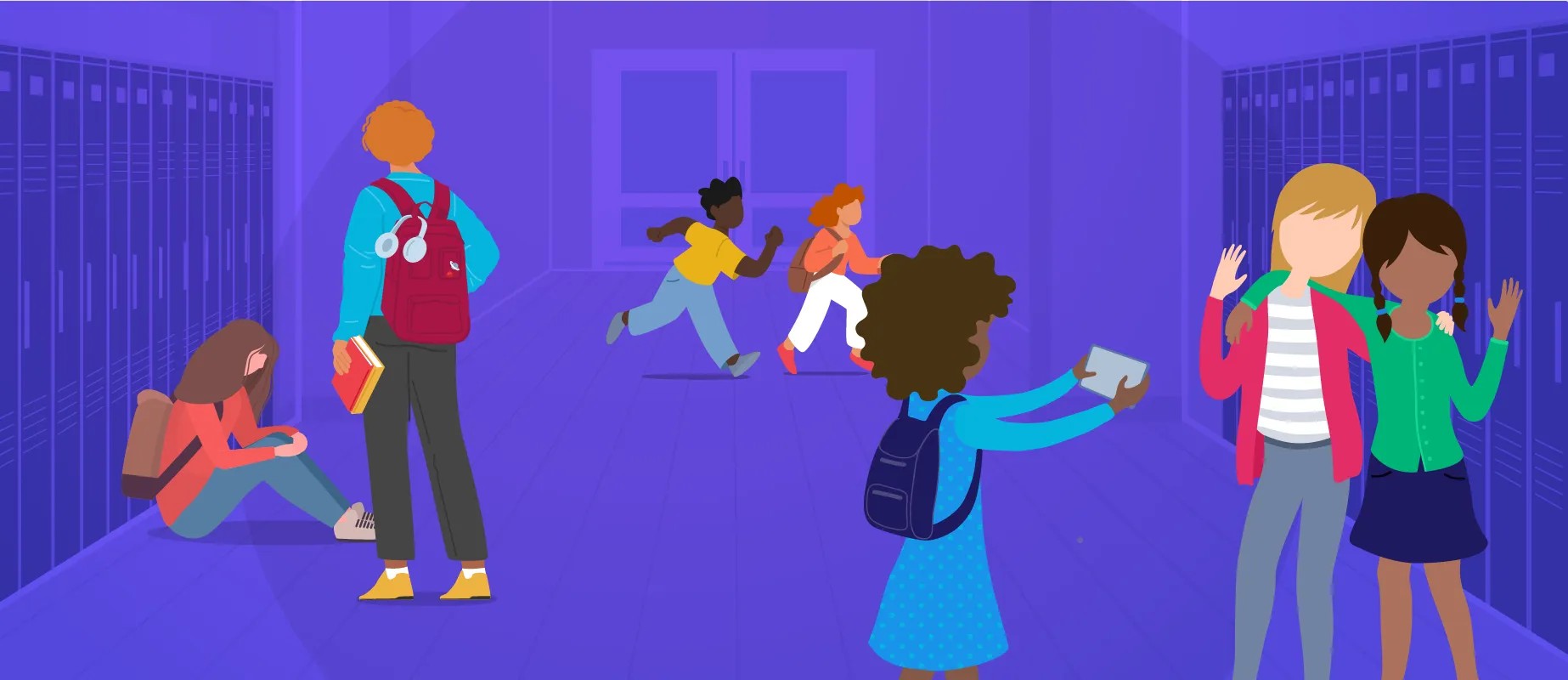In the News: Enhancing Safety in Schools Across Minnesota
Read the Story
SmartPass Co-Founders Listed on Forbes 30 Under 30
Read the Story

Lee Moskowitz
.avif)

Let’s face it: cutting class has been an issue in schools long before the era of smartphones and social media. But in today’s world of TikTok trends, constant online connection, skipping class has taken on new dimensions. Phones make it easier than ever to coordinate student-meetups. student. On top of that, the COVID-19 pandemic has reshaped students’ relationship with school routines, making absenteeism and disengagement more common than ever before.
The COVID-19 pandemic brought a surge in school absenteeism, setting off a lasting trend that schools across the country are still working to address.
According to a report from the School Pulse Panel, around 72% of schools reported an increase in absenteeism during the 2021-2022 school year compared to pre-pandemic levels. While chronic absence rates saw some improvement in 2023, they’re still about 75% higher than they were pre-COVID.
Why is cutting class so common, and is it just a harmless teenage phase or something worth serious concern? The reality is, class-cutting can lead to a cascade of issues, from poor grades to school culture challenges and safety risks. For instance, research from Attendance Works shows that chronic absenteeism is strongly linked to lower academic achievement, even at early grade levels.
This blog dives into the underlying reasons behind class-cutting, and provides practical solutions to address the problem and encourage consistent attendance for educators, parents, and school administrators
1. Avoiding Difficult or Uninteresting Subjects
Students frequently skip classes that they find particularly challenging or uninspiring, especially in subjects like math and science. According to a study from the National Center for Education Statistics (NCES), students who consistently struggle academically are significantly more likely to miss classes. When students feel unsupported or incapable of keeping up, avoiding these subjects becomes a coping mechanism to avoid perceived failure or embarrassment.
Schools that adopt teaching methods focused on differentiated instruction and peer tutoring may help reduce absenteeism by making challenging subjects feel more manageable. Small-group work, project-based learning, and interactive activities also tend to make classes feel less intimidating, improving engagement even in traditionally difficult subjects.
2. Peer Influence and Social Pressure
Peer dynamics are a powerful driver of behavior, especially in adolescence. High school students, in particular, often feel pressured to "keep up" with their friend groups, sometimes leading them to make choices they might otherwise avoid, including cutting class.
To address this, schools can foster positive peer networks, such as mentorship programs where older students help guide younger ones or school clubs that encourage productive social interaction. By emphasizing positive peer influence, schools can create environments where attending class feels just as socially rewarding as skipping it.
3. Mental Health Struggles
Anxiety, depression, and stress contribute significantly to student absenteeism. For some students, skipping class is a form of escape, particularly if they feel that school exacerbates their mental health issues.
Schools that emphasize mental health support through counseling services, mental health awareness programs, and regular check-ins with students are better positioned to help those struggling emotionally. Equipping teachers with training on mental health awareness can also ensure that students get the support they need before absenteeism becomes chronic.
4. Disconnection from School Community
Students who feel disconnected from their school environment are more likely to disengage and cut class. When students feel invisible or unwelcome, they are less inclined to participate in the academic and social aspects of school.
Initiatives that promote inclusivity, such as cultural clubs, student government, and community events, can help students feel more connected to their school. Recognizing students for their contributions and achievements, even small ones, can create an environment where students feel valued and are therefore more likely to attend class.
5. Skipping for Misbehavior or Activities in Unsupervised Areas
Finally, some students skip class to engage in unsupervised activities like vaping or school bathroom vandalism. These behaviors not only disrupt school environments but also attract other students who might be swayed by the lack of accountability in these areas.
Schools can address this issue by ensuring increased supervision in vulnerable areas and establishing clear policies for hall passes and bathroom usage. Positive reinforcement programs that reward responsible behavior and the support of student leaders to promote accountability can also reduce the temptation to skip class for risky activities.
Cutting class may seem harmless when it happens occasionally, but it can have lasting consequences. Here are some ways it affects students and schools:
Schools can take a proactive approach to address class-cutting by implementing supportive strategies. Here are some proven methods to help keep students engaged and reduce skipping:
1. Create a Positive School Environment
Schools that foster an inclusive, welcoming environment see fewer issues with absenteeism. Building a school culture that values diversity, supports student interests, and celebrates achievements can help students feel more connected. Clubs, mentorship programs, and extracurricular activities can give students a sense of belonging that encourages them to stay engaged.
2. Engage Parents and Guardians
Parents play a key role in reinforcing good attendance habits. Schools can maintain open communication with parents by sharing attendance policies, notifying them of absences, and involving them in efforts to address attendance issues. Educators might encourage parents to establish routines that emphasize the importance of school attendance.
3, Develop an Early Warning System
Schools that actively monitor attendance data can identify at-risk students early on. This might include analyzing patterns, such as frequently skipped classes or specific times of day when students are more likely to be absent. Many schools have found success by implementing digital tracking systems that automatically flag repeated absences, helping staff proactively support students before class-cutting becomes a habit.
4. Offer Mental Health Support
Given the close connection between mental health and attendance, providing accessible mental health resources is essential. Schools can ensure that students have access to counseling, therapy, or other mental health support. Training teachers to recognize signs of anxiety or depression can also make a big difference, as they can then refer students to the appropriate resources.
5. Enhance Classroom Engagement
Increasing student engagement in the classroom is one of the best ways to reduce class-cutting. Teachers can experiment with project-based learning, discussions, and other interactive methods that appeal to a variety of learning styles. When students are interested in the material, they’re more likely to want to show up and participate.
6. Implement Attendance Incentives and Fair Consequences
Schools can establish attendance programs that reward students for consistent class attendance, such as public recognition or small privileges. Balanced with fair consequences, these incentives can encourage students to view attendance positively.
Parents and guardians play a critical role in addressing and preventing class-cutting. Here are a few ways parents can support consistent attendance:
Ultimately, reducing class-cutting requires that students see the value of attending class. Schools can promote this by:
Addressing class-cutting is a complex challenge, but schools can make a meaningful impact with proactive and supportive strategies. By understanding the reasons behind class-cutting, involving parents, and fostering a positive school environment, educators can create spaces where students feel motivated to attend and succeed. Tools like SmartPass provide an additional layer of support by managing hall traffic and improving accountability, which reduces opportunities for students to skip class. With SmartPass, schools can more effectively monitor student movement and encourage responsible behavior, helping ensure a safer, more supportive educational experience for everyone. Working together with solutions like SmartPass, educators, parents, and students can reduce absenteeism and strengthen the school community.

.jpg)

